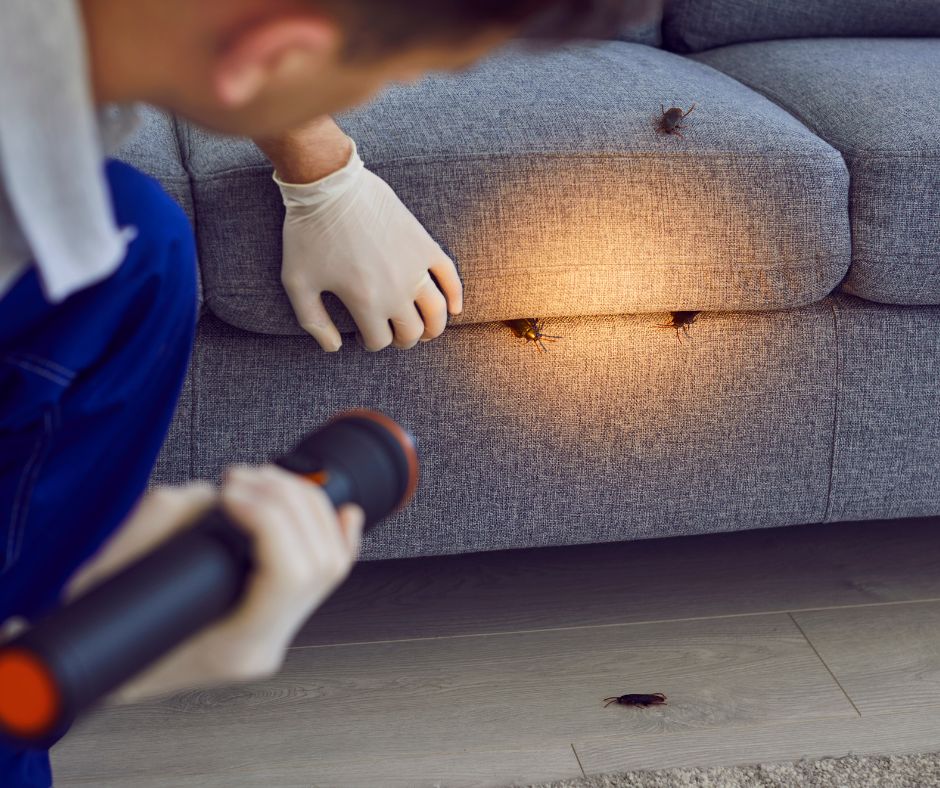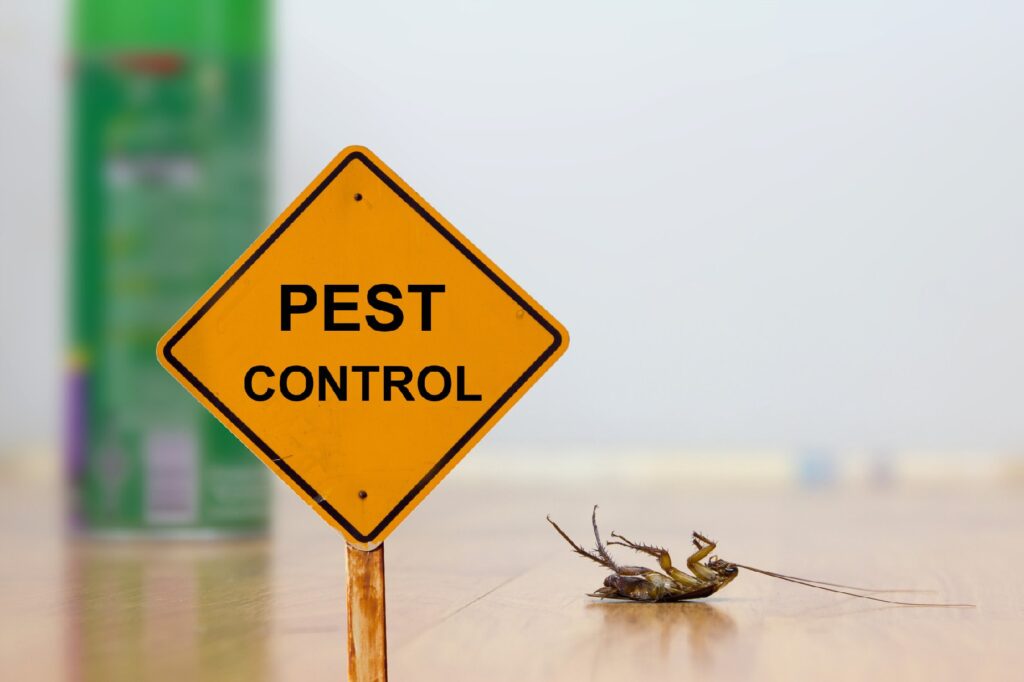Experienced Cockroach Exterminator Port Charlotte to Eliminate Pests Fast
Learn More About the current Advances in Bug Control and Just How to Implement Effective Treatment Solutions
In current years, the field of pest control has actually experienced significant innovations, driven by the requirement for effective and lasting treatment remedies. Ingenious methods such as Integrated Parasite Administration (IPM) combine environmentally friendly methods with advanced modern technology, improving both efficiency and environmental duty.
Eco-Friendly Pest Control Options
Recently, the demand for eco-friendly parasite control choices has actually risen as services and house owners alike look for lasting choices to conventional chemical treatments. This change is driven by expanding ecological awareness and a wish to decrease the health risks associated with synthetic pesticides.

Environmentally friendly pest control approaches include a variety of strategies that prioritize making use of all-natural materials and methods. Integrated Pest Monitoring (IPM) is one such technique, combining organic, cultural, and mechanical methods to handle parasite populations while reducing dependence on chemicals (Wildlife removal services). This holistic technique emphasizes avoidance with habitat adjustment and the introduction of all-natural predators, consequently fostering a well balanced ecosystem
An additional popular choice is the use of organic chemicals originated from plants, which often tend to be less unsafe to non-target organisms. Products like neem oil and diatomaceous planet have actually gained traction for their effectiveness in controlling parasites while posturing minimal risks to human health and wellness and the setting.
In addition, exclusion techniques, such as sealing entry factors and maintaining cleanliness, play a critical function in green parasite management. By taking on these sustainable techniques, organizations and people can efficiently take care of pests while promoting a healthier world for future generations.
Smart Modern Technology in Pest Management
Advancement is improving the landscape of bug monitoring, with clever technology emerging as a pivotal force in enhancing efficiency and performance - Wildlife removal services. The integration of Internet of Things (IoT) devices, man-made intelligence (AI), and data analytics is transforming exactly how bug control experts approach infestations
Smart traps equipped with sensing units can detect pest task in real-time, sending out prompt signals to drivers. This enables timely reactions, reducing damage and lowering the demand for substantial treatments. Additionally, AI algorithms assess historic data to predict pest actions, allowing positive interventions based upon ecological conditions and infestation patterns.
Drones and computerized automobiles are likewise playing a significant duty in parasite administration, offering airborne analyses of big areas, recognizing hotspots, and even dispersing targeted treatments. These technologies not just enhance operations but additionally improve security by restricting human exposure to possibly dangerous chemicals.
In addition, mobile applications equip consumers to keep an eye on insect task and access specialist guidance, cultivating a collaborative strategy to pest management. On the whole, the fostering of wise modern technology is setting a brand-new standard in bug control, stressing data-driven choices and sustainable techniques that ultimately benefit both home owners and professionals alike.
Integrated Bug Monitoring Strategies
Integrated Insect Administration (IPM) utilizes a holistic method to pest control, combining different approaches to effectively handle bug populaces while minimizing risks to human health and wellness and the setting. IPM focuses on understanding the pest life process, their all-natural enemies, and the community in which they prosper.
Among the basic components of IPM is checking pest populaces via regular evaluations and data collection. This permits the identification of parasite limits, establishing when treatment is essential. Social techniques, such as plant hygiene, environment, and rotation adjustment, are important in minimizing bug occurrence and promoting plant health and wellness.
Mechanical controls, including barriers and traps, are likewise crucial in IPM. These techniques can physically remove or hinder parasites without using chemicals. When required, the cautious application of chemical controls is employed, concentrating on targeted therapies that reduce environmental impact.
Education and cooperation amongst stakeholders, including farmers, pest control specialists, and the area, are crucial for the effective application of IPM techniques. By focusing on sustainable practices, IPM not only addresses pest concerns however also cultivates a healthier community.
Biological Control Methods
Countless biological control methods are significantly identified for their performance in managing parasite populaces while promoting environmental equilibrium. These techniques harness all-natural predators, parasites, and microorganisms to reduce pest numbers without counting on synthetic chemicals. The introduction of ladybugs can properly manage aphid populaces, while nematodes target soil-dwelling insect larvae.
In addition, using microbial pesticides, such as Bacillus thuringiensis (Bt), supplies an environmentally pleasant option for managing caterpillar insects. These items specifically target pest varieties, minimizing injury to helpful pests and pollinators. Preservation organic control highlights boosting environments for natural adversaries, such as birds find out and valuable insects, thus encouraging their existence in agricultural systems.
Research continues to expose ingenious approaches within this field, such as the usage of scents to interrupt pest breeding patterns or the development of biocontrol representatives via genetic modification. Applying these approaches can result in sustainable insect administration methods that alleviate the reliance on chemical treatments, eventually promoting healthier environments. As recognition of these methods grows, they are becoming integral parts of incorporated pest monitoring (IPM) strategies, supplying an equilibrium between efficient bug control and environmental stewardship.
DIY Bug Control Solutions
As property owners seek effective means to deal with bug concerns, do it yourself insect control solutions have actually gained popularity for their access and cost-effectiveness. These methods encourage individuals to address invasions making use of easily offered materials and strategies, typically without the demand for professional treatment.

Furthermore, maintaining proper sanitation and normal inspections can prevent pest access and nesting (Wildlife removal services). Straightforward techniques, such as sealing fractures, eliminating food sources, and decluttering, can dramatically lessen parasite populaces. Catches, both homemade and commercially offered, can also offer effective click here for more info solutions for tracking and controlling particular insects like pests or rats

Conclusion
The integration of environment-friendly insect control alternatives, clever modern technology, and innovative monitoring methods provides a thorough strategy to reliable pest administration. By welcoming Integrated Insect Monitoring (IPM) and making use of organic control methods, along with do it yourself remedies, liable and lasting parasite control can be accomplished. These innovations not only improve the efficiency of bug management techniques but also contribute to a much healthier environment. Applying these methods cultivates a balanced ecosystem while successfully dealing with pest populaces.
Green pest control methods include a variety of approaches that focus on the usage of natural substances and practices. Integrated Insect Administration (IPM) is one such technique, incorporating organic, social, and mechanical tactics to manage pest populations while decreasing reliance on chemicals. As understanding of these methods grows, they are ending up being indispensable parts of incorporated bug monitoring (IPM) approaches, offering an equilibrium between effective insect control and environmental stewardship.
The combination of environment-friendly bug control alternatives, clever modern technology, and innovative management methods offers an extensive technique to efficient bug administration. By welcoming Integrated Parasite Monitoring (IPM) and making use of organic control techniques, along Visit Website with DIY solutions, sustainable and responsible insect control can be achieved.